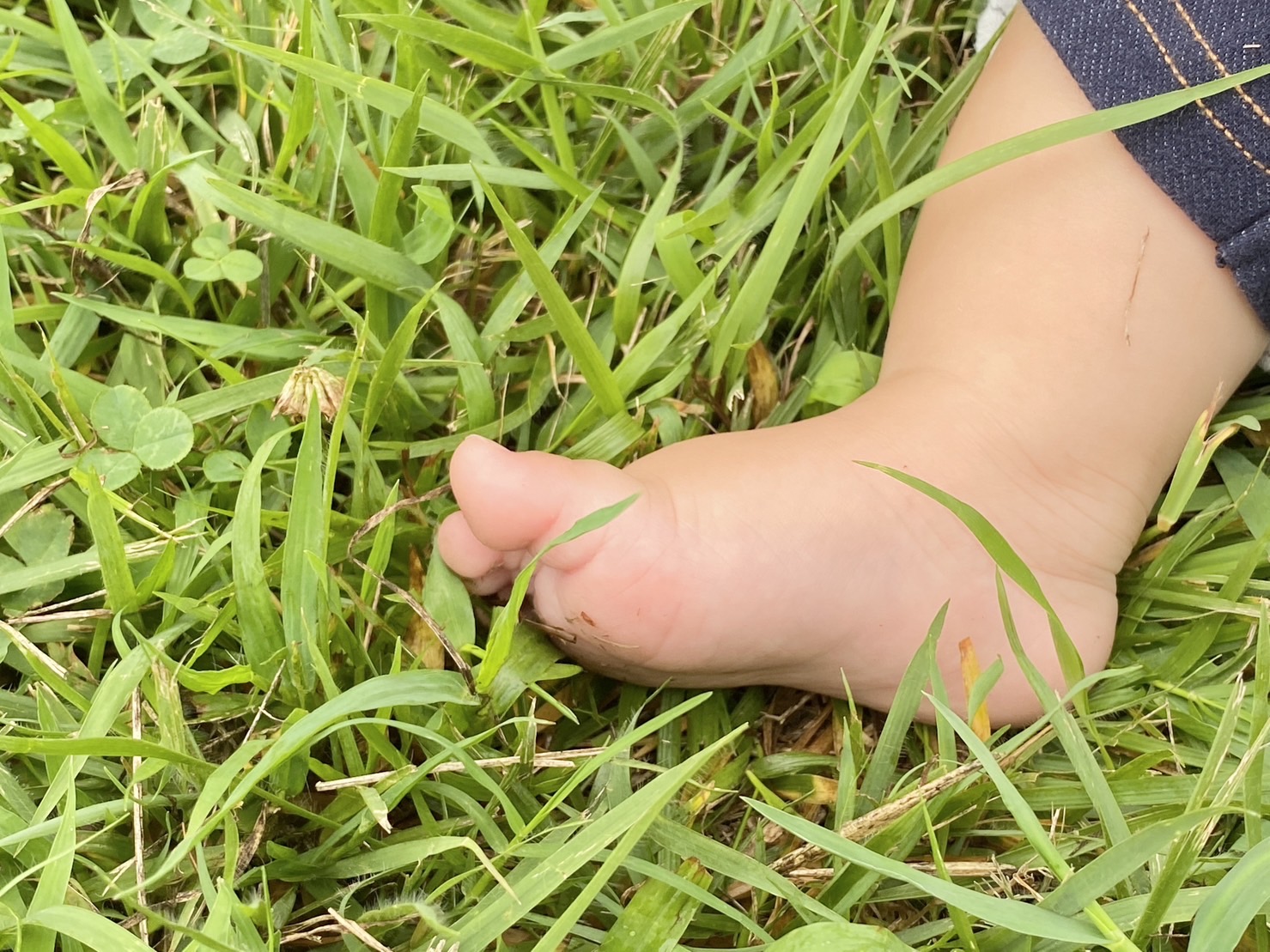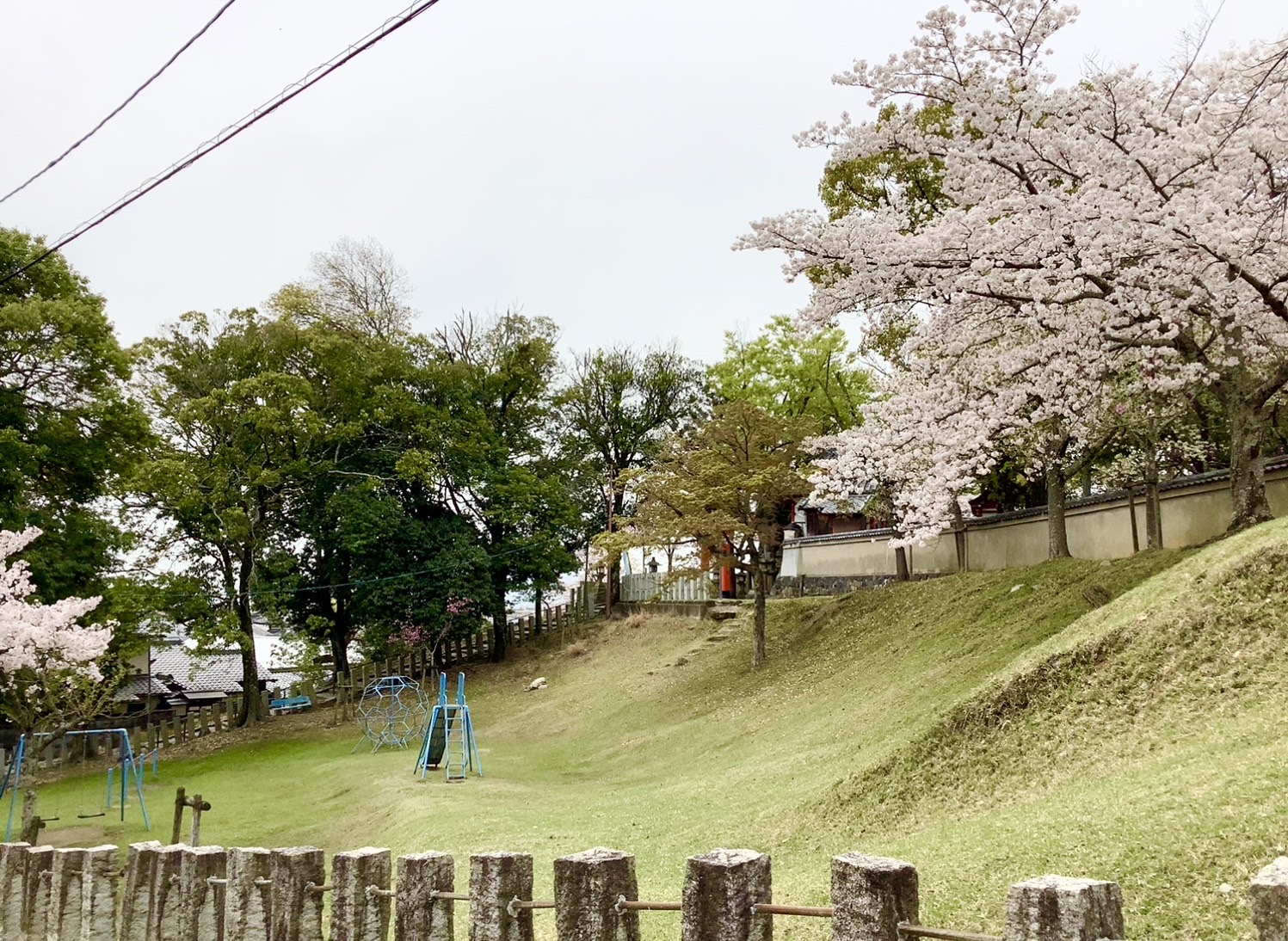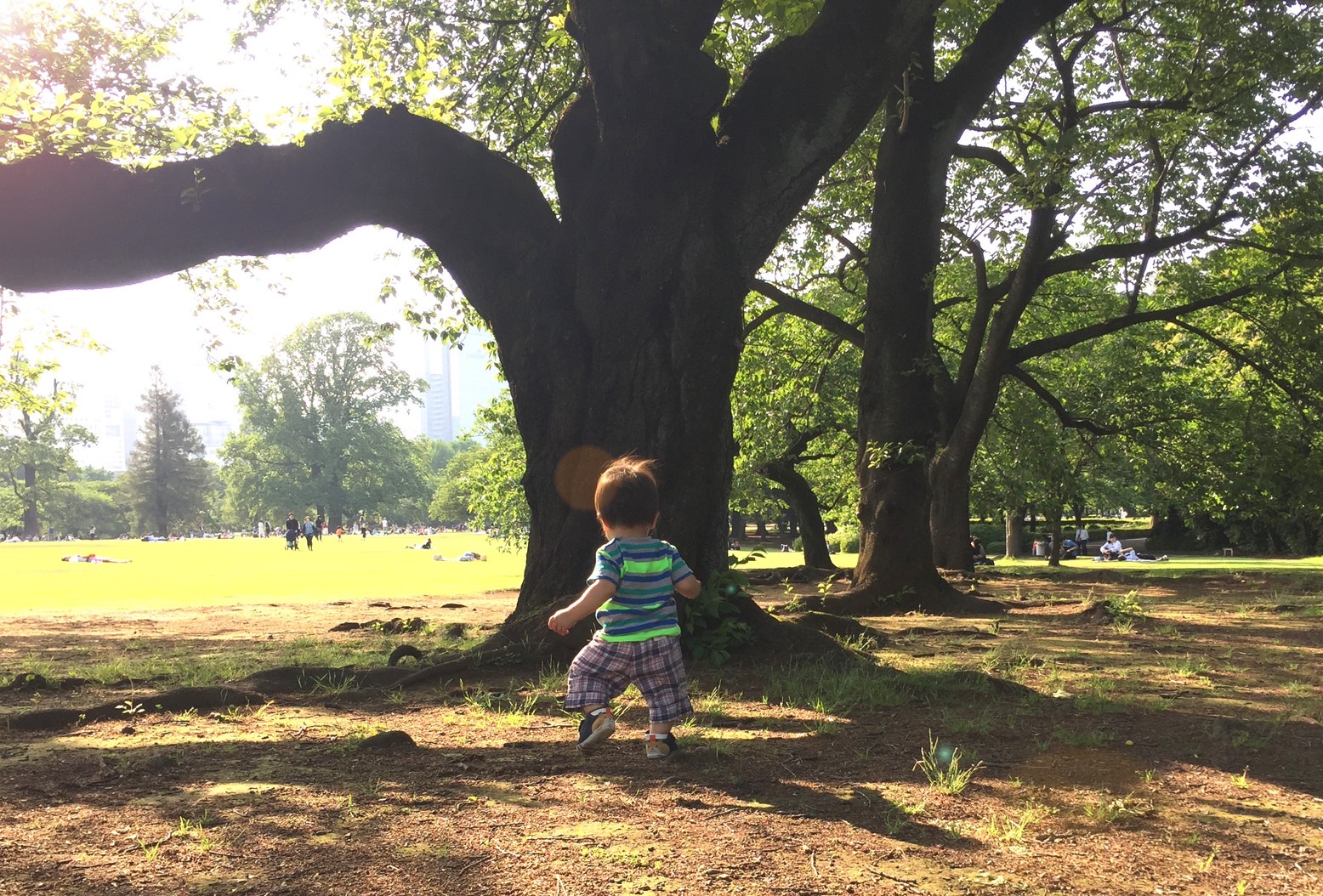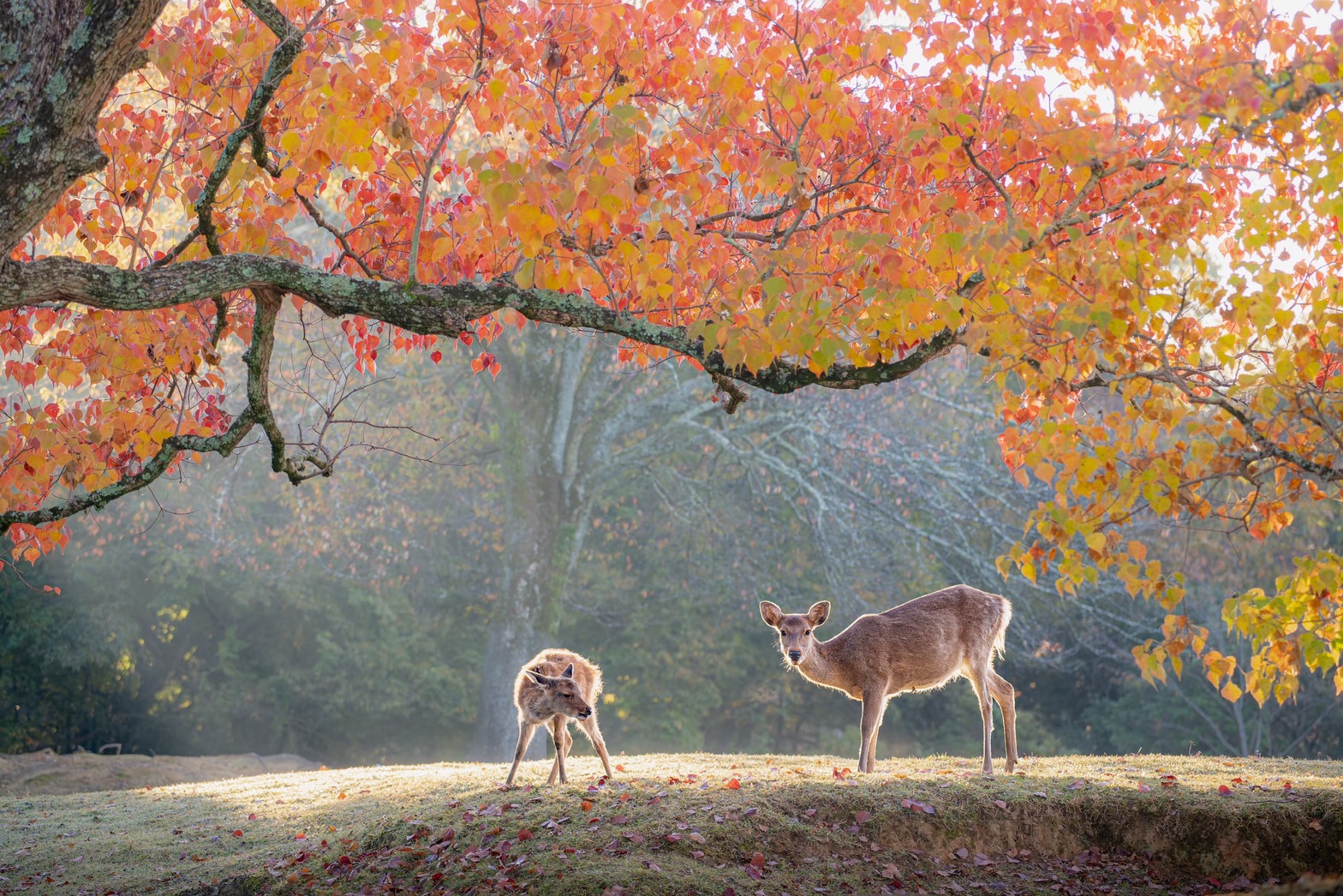- お庭の探索をします
子ども達には工夫を凝らしたお庭で、自然の探求や泥んこ遊びなど思い切り活動して欲しいと考えています。また、近くの公園に足を運んで身体を動かし、粗大運動の発達を促します。少し進むと奈良公園の素晴らしい自然や浮見堂の荘厳な景色が目の前に広がります。美しい鹿も間近で見ることが出来ます。マリア・モンテッソーリは発達の4段階※(1)の中で、人生の最初の6年間が物事を学ぶ最も大切な時期で、その中でも特に重要なのは3歳までの時期だと言いました。私たちは子ども達に、美しい自然を日々に目に焼き付け、感じ、その中で活動することを望みます。
- 環境について学びます
資源や水は限りがあることを学びます。水を再利用したり、生ごみをコンポストに入れて肥料を作ったり、リサイクルの方法を自然な形で子どもに見せ、時には活動に参加してもらいます。子ども達は大人が地球環境についてどう考え、どう扱うかを見ています。私達大人の態度も非常に大切です。
- お庭での活動をします
子どもの発達に適したサイズの小さなじょうろやバケツ、ほうき、熊手などを使い子ども達も庭で様々な外の活動に参加します。木や草花や野菜に水やりをしたり、草を抜いたり、落ち葉を掃いたりします。自然に触れながら粗大運動、微細運動の発達を促します。

- 北天満町ちびっこ広場に行きます
子どもの家から歩いて10分ほど進むと北天満町ちびっこ広場があります。この公園は地面全体がやや傾斜しており、動くことに大きな喜びを感じる子ども達の粗大運動の発達に最適の場所です。子どもの筋力の強化、平衡感覚の発達や洗練を促す活動として、歩いたり、走ったり、登ったり、上がったり、ぶら下がったり、跳んだり、押したり、引いたり、滑ったりする活動を行います。身体を思い切り動かして強い身体を作ることは自立心や自尊心に繋がります。

- 美しい奈良の名所へのお散歩をします
「生涯のうちで最も大切な時期は、大学での勉学に相当する時期ではなく、むしろ誕生から6 歳までの第1 の時期である、と。この時期にこそ、人間の偉大な道具である知性が形成されるからです。さらに知性だけでなく精神的な機能全体が形成されるからです。」モンテッソーリ・マリア著 中村勇訳 「子どもの精神―吸収する精神―」 29p
公益財団法人 才能開発教育研究財団 日本モンテッソーリ教育綜合研究所 2020年第7版発行
- Garden exploration:
We want children to engage in activities such as exploring nature and playing in the mud in our carefully designed garden. Under our watchful supervision, children also continue to develop their gross motor skills while they explore a nearby park. A little farther away, they experience the magnificent nature of Nara Park and the peaceful scenery of Ukimido. Beautiful deer are seen up close. Maria Montessori explained that the first six years of life, within “the four stages of development※(1)”, are the most crucial for learning. In the particularly important period up to the age of 3, children should daily witness, feel, and actively engage with the beautiful nature.
- Learning about the environment:
Children learn that resources, including water, are limited. We show children natural ways to reuse water, compost kitchen waste for fertilizer, and recycle, occasionally involving them in these activities. Children observe how adults think about and treat the Earth's environment. Our attitude as adults becomes crucial.
- Activities in the garden:
Using appropriately sized tools for children's development, such as small watering cans, buckets, brooms, and rakes, we engage in activities like watering trees, pulling weeds, and sweeping up leaves. This promotes gross and fine motor skill development while connecting with nature.

- Kitatenma cho Chibikko Park:
About a 10-minute walk northeast from the Children's House. This park, with slightly sloping grounds, is an ideal place for children to take great pleasure in movement. Activities include walking, running, climbing, hanging, jumping, pushing, pulling, and sliding to develop gross motor skills. Moving their bodies vigorously contributes to independence and self-esteem.

- Strolls to Nara landmarks:
“Now that the psychologists have come to study life, there is a tendency to go to the other extreme,and there are other people besides me who say that the most important part of life is not the university, but the first period the period that extends from 0 to 6 years because it is during this first period that intelligence, the great instrument of man, is formed; and not only intelligence, but the whole of the psychic faculties is constructed during this period.Maria Montessori ”The Absorbent Mind” 30 p
First Start Publishing eBook edition October 2012 Manufactured in the United States of America


